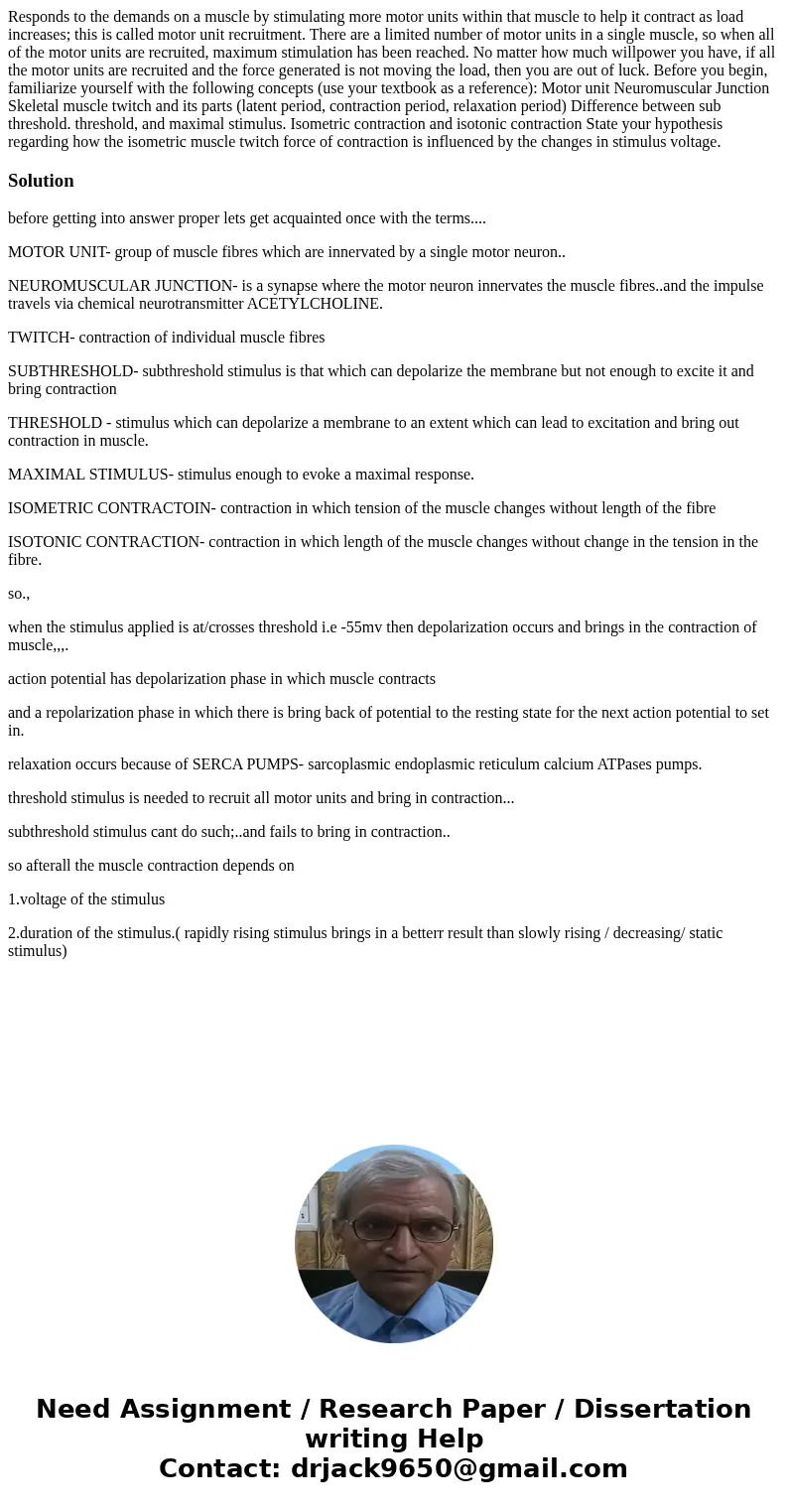Responds to the demands on a muscle by stimulating more moto
Solution
before getting into answer proper lets get acquainted once with the terms....
MOTOR UNIT- group of muscle fibres which are innervated by a single motor neuron..
NEUROMUSCULAR JUNCTION- is a synapse where the motor neuron innervates the muscle fibres..and the impulse travels via chemical neurotransmitter ACETYLCHOLINE.
TWITCH- contraction of individual muscle fibres
SUBTHRESHOLD- subthreshold stimulus is that which can depolarize the membrane but not enough to excite it and bring contraction
THRESHOLD - stimulus which can depolarize a membrane to an extent which can lead to excitation and bring out contraction in muscle.
MAXIMAL STIMULUS- stimulus enough to evoke a maximal response.
ISOMETRIC CONTRACTOIN- contraction in which tension of the muscle changes without length of the fibre
ISOTONIC CONTRACTION- contraction in which length of the muscle changes without change in the tension in the fibre.
so.,
when the stimulus applied is at/crosses threshold i.e -55mv then depolarization occurs and brings in the contraction of muscle,,,.
action potential has depolarization phase in which muscle contracts
and a repolarization phase in which there is bring back of potential to the resting state for the next action potential to set in.
relaxation occurs because of SERCA PUMPS- sarcoplasmic endoplasmic reticulum calcium ATPases pumps.
threshold stimulus is needed to recruit all motor units and bring in contraction...
subthreshold stimulus cant do such;..and fails to bring in contraction..
so afterall the muscle contraction depends on
1.voltage of the stimulus
2.duration of the stimulus.( rapidly rising stimulus brings in a betterr result than slowly rising / decreasing/ static stimulus)

 Homework Sourse
Homework Sourse